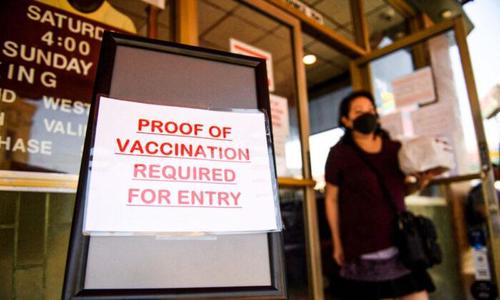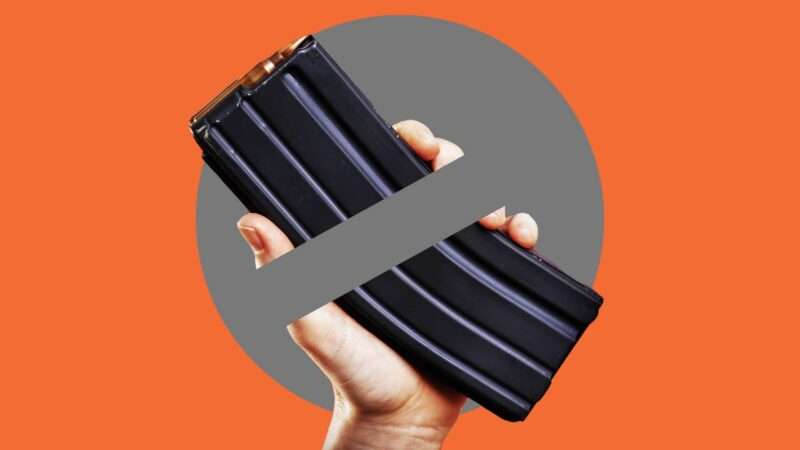In a 7-4 decision today from an 11-judge en banc panel of the U.S. Court of Appeals for the 9th Circuit, California’s 2016 ban on magazines that hold more than 10 rounds was found constitutional, despite earlier conclusions from a lower court and a three-judge panel of the 9th Circuit that the ban violated the Second Amendment.
“Under the Second Amendment, intermediate scrutiny applies, and [the ban] is a reasonable fit for the important government interest of reducing gun violence,” Judge Susan Graber wrote for the majority today in Duncan v. Bonta. “The statute outlaws no weapon, but only limits the size of the magazine that may be used with firearms, and the record demonstrates (a) that the limitation interferes only minimally with the core right of self-defense, as there is no evidence that anyone ever has been unable to defend his or her home and family due to the lack of a large-capacity magazine; and (b) that the limitation saves lives.”
She added: “In the past half-century, large-capacity magazines have been used in about three-quarters of gun massacres with 10 or more deaths and in 100 percent of gun massacres with 20 or more deaths, and more than twice as many people have been killed or injured in mass shootings that involved a large-capacity magazine as compared with mass shootings that involved a smaller-capacity magazine.”
“Accordingly,” Graber concluded, “the ban on legal possession of large-capacity magazines reasonably supports California’s effort to reduce the devastating damage wrought by mass shootings.”
Graber’s decision also denied the ban of such magazines constituted an unconstitutional taking of property without compensation, since owners of the now-illegal magazines can “modify or sell their nonconforming magazines” and thus “the law does not deprive owners of all economic use.”
Writing in dissent, Circuit Judge Patrick Bonabay complains that by use of “intermediate scrutiny” the 9th Circuit ensures that “so long as a firearms regulation aims to achieve a conceivably wise policy measure, the Second Amendment won’t stand in its way. In effect, this means we simply give a blank check to lawmakers to infringe on the Second Amendment right. Indeed, post-Heller, we have never struck down a single firearms regulation.”
The “manufacture, importation, or sale” of high-capacity magazines has been illegal in California since 2000. Possessing ones you already owned, though, had remained legal until the 2016 passage of Proposition 63, which “imposed a possible criminal penalty of imprisonment for up to a year for unlawful possession of large-capacity magazines.”
Thanks to today’s decision, the state is now free to enforce its ban on magazines holding more than 10 rounds. (The ban had been blocked from going into effect while the case played out in court.) As is often the case with gun control laws, current or retired police officers, our special centurion class, are not subject to the law.
Recent history shows that it is very hard indeed to get citizens who see themselves as peacefully possessing formerly legal items to cooperate when the state seeks to take those items from them. In other words, thanks to today’s 9th Circuit decision, expect more police harassment of fundamentally innocent gun owners and all of the collateral damage that such police actions invariably will cause. The end result will not be a safer California.
Scrutinizing Scrutiny
Contra Graber’s decision, that “intermediate scrutiny” is how the Second Amendment should be dealt with might be 9th Circuit practice, but it is not settled Supreme Court doctrine. Indeed, in this very decision the 9th Circuit challenges the Supreme Court to tell them very explicitly if that Court thinks the 9th Circuit is misapplying its standard of scrutiny to the Second Amendment.
For those who like to imagine “shall make no law” settles the issue, the whole question of “scrutiny” might seem a deliberately confusing mess. But the 9th Circuit sees meaningful distinctions to be made, which it explains thusly: “Strict scrutiny applies only to laws that both implicate a core Second Amendment right and place a substantial burden on that right” while “Intermediate scrutiny applies to laws that either do not implicate a core Second Amendment right or do not place a substantial burden on that right.”
As to what the different terms actually mean in judicial practice, strict scrutiny requires that a law indicates “both narrow tailoring to a compelling governmental interest and the use of the least restrictive means.” Intermediate scrutiny, for its part, merely requires that a law shows “a reasonable fit with an important governmental interest.”
The core of the Second Amendment right as the 9th Circuit reads the 2008 Heller decision is about self-defense in the home. And in their judgment, the magazine ban “imposes only a small burden on the Second Amendment right and that, accordingly, intermediate scrutiny is the appropriate lens.”
The Court basically thinks that the imposition on the Second Amendment right by this law is just not a very big deal, in colloquial terms. As the decision today says, “The ban on large-capacity magazines has the sole practical effect of requiring shooters to pause for a few seconds after firing ten bullets, to reload or to replace the spent magazine. Nothing in the record suggests that the restriction imposes any more than a minimal burden on the Second Amendment right to keep and bear arms.”
Graber did not find real-world evidence that self-defense in the home requires the use of the now-banned magazines, thus she concluded the magazine ban did not impact the right in its most important aspect. The plaintiffs tried to argue, calling on the Heller decision’s reliance in places on how commonly used a weapon might be, that the fact at least half of American magazine buyers choose the kind California is banning shows it is a weapon element deserving of Second Amendment protection; Graber did not think that mattered.
The 9th Circuit’s decision asserts that the state obviously has a compelling and important interest in trying to make some mass shootings potentially less lethal by restricting magazine size. The decision also insists that the law does not substantially damage the Second Amendment’s core self-defense-in-the-home purpose. Thus, their “intermediate scrutiny” analysis leads to the conclusion the law is perfectly constitutional.
In the dissent from Judge Bumatay, he insists the majority got it wrong from the start; any sort of “scrutiny” analysis is not the way the Supreme Court wants them approaching the Second Amendment.
Bumatay looks back to Heller, the beginning of modern Second Amendment jurisprudence, for clues as to the right way to judge laws that implicate the Second Amendment. What courts, including his own 9th Circuit, should do is perform “an extensive analysis of the text, tradition, and history of the Second Amendment. Our court should have dispensed with our interest-balancing approach and hewed to what the Supreme Court told us to do.”
Had they done that, Bombatay insists the 9th Circuit would have come to the opposite conclusion to today’s majority decision from Graber. As Bombatay points out, “Firearms and magazines capable of firing more than ten rounds have existed since before the Founding of the nation. They enjoyed widespread use throughout the nineteenth and twentieth centuries. They number in the millions in the country today. With no longstanding prohibitions against them, large-capacity magazines are thus entitled to the Second Amendment’s protection.”
The magazines the state banned “are lawfully owned by millions of people nationwide and come standard on the most popular firearms sold today” and “the Constitution protects the right of law-abiding citizens to keep and bear arms typically possessed for lawful purposes.” Thus, the 9th Circuit should have kept the magazine ban buried.
Bumatay sees the 9th Circuit’s scrutiny analysis as “nothing more than a black box used by judges to uphold favored laws and strike down disfavored ones.” That method has never been how the Supreme Court intended lower courts to do Second Amendment jurisprudence, he insists, and he quotes various Supreme Court justices to support this belief.
One of the sharpest such quotes was from Justice Clarence Thomas, who wrote in a 2020 dissent from a denial of certiorari in the case of Grewal v. Rogers that Heller “explicitly rejected the invitation to evaluate Second Amendment challenges under an ‘interest balancing inquiry, with the interests protected by the Second Amendment on one side and the governmental public-safety concerns on the other.'”
Circuit Judge Lawrence VanDyke in a saltier separate dissent says that the 9th Circuit is driven “by a single-minded focus on ensuring that any panel opinions actually enforcing the Second Amendment are quickly reversed. The majority of our court distrusts gun owners and thinks the Second Amendment is a vestigial organ of their living constitution. Those views drive this circuit’s caselaw ignoring the original meaning of the Second Amendment and fully exploiting the discretion inherent in the Supreme Court’s cases to make certain that no government regulation ever fails our laughably ‘heightened’ Second Amendment scrutiny.”
The post California's Ban on Magazines Holding More Than 10 Rounds Is Constitutional, 9th Circuit Decides appeared first on Reason.com.
from Latest – Reason.com https://ift.tt/3d4TO5J
via IFTTT




